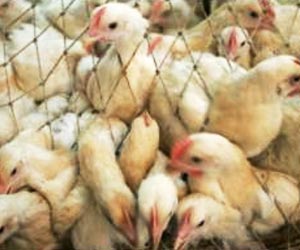More than 1,700 lives have been jointly claimed by the H7N9 bird flu virus in China and the H1N1 swine flu virus in India causing scientists to sound warnings.

A different team, writing in the US journal Cell Host and Microbe, said a strain of H1N1 "swine" flu in India may have acquired mutations enabling it to spread more readily.
Looking at H7N9, epidemiologists led by Yi Guan at the University of Hong Kong sought to understand why this dangerous strain emerged in China in 2013, faded away and then rebounded in 2014.
The reason lies in the live poultry sector, they found, with China's eastern province of Zhejiang a springboard for spreading the virus south- and eastward.
In the 2014 outbreak, H7N9 mixed with other flu viruses, helping to create new strains, the team said.
Their evidence came from throat and faecal swabs taken from chickens at live markets in Zhejiang, Guangdong, Jiangxi, Jiangsu and Shandong provinces from October 2013 to July 2014. No H7N9 was found among ducks.
Advertisement
The study called for the closure of live markets, a ban on poultry transport within China, and the establishment of centralised slaughter houses to curb virus spread.
Advertisement
According to the UN's World Health Organization (WHO), 571 cases of H7N9 among humans were reported as at February 23 this year, of which 212 had been fatal.
The worry about flu strains circulating among farm animals is mutation -- that by mixing with other viruses, they pick up genetic variants that make them more contagious or lethal for humans.
On current evidence, H7N9 has not acquired such mutations, according to the WHO.
- Spread beyond China? -
H7N9 is a particular worry as it does not kill infected chickens or cause them to develop symptoms, which allows it to spread undetected until contact is made with humans.
"Given the current pattern of dissemination, it will only be a matter of time before poultry movement spreads this virus beyond China by cross-border trade, as happened previously with the H5N1 and H9N2 influenza viruses," the study warned.
In the second paper, scientists led by Ram Sasisekharan at the Massachusetts Institute of Technology (MIT) analysed the genetic ID of the H1N1 flu virus circulating in India.
According to the Indian health ministry, 1,482 people had died from H1N1 as at March 9.
The present strain is genetically different from that of 2009, showing mutations in amino acids -- the building blocks of proteins -- that point to greater virulence.
The finding raises questions whether the available H1N1 vaccine is a shield against this tweaked version, the team said.
"(The) effectiveness of the current H1N1 flu vaccine is debatable, and there have been calls for updating the vaccine," said Sasisekharan.
Source-Medindia









